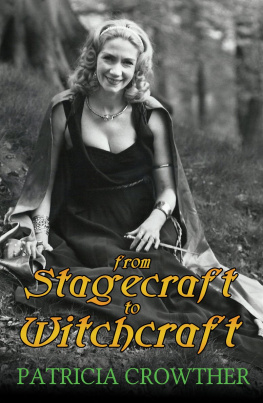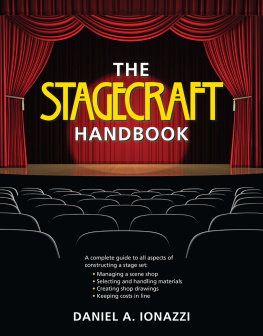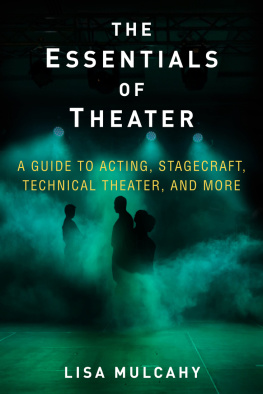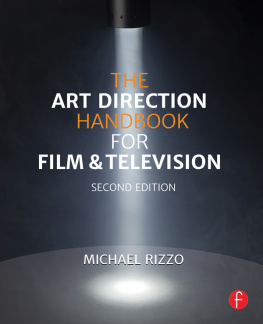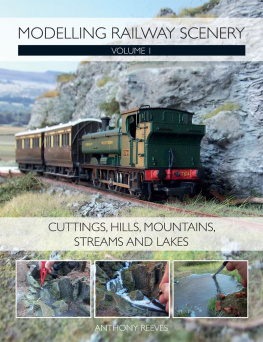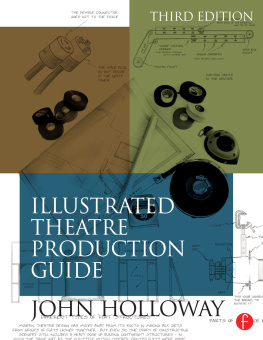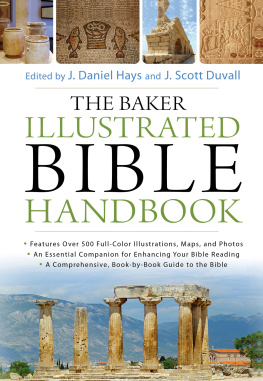THE
STAGE
CRAFT
HAND
BOOK
Daniel A. Ionazzi

The Stagecraft Handbook.
Copyright 1996 by Daniel A. Ionazzi. Printed and bound in the United States of America. All rights reserved. No part of this book may be reproduced in any form or by any electronic or mechanical means including information storage and retrieval systems without permission in writing from the publisher, except by a reviewer, who may quote brief passages in a review. Published by Betterway Books, an imprint of F+W Publications, Inc., 4700 East Galbraith Road, Cincinnati, Ohio 45236. (800) 289-0963. First edition.
Other fine Betterway Books are available from your local bookstore or direct from the publisher.
10 09 08 11 10 9
Library of Congress Cataloging-in-Publication Data
Ionazzi, Daniel A.
The stagecraft handbook / Daniel A. Ionazzi. 1st ed.
p. cm.
Includes index.
ISBN 13: 978-1-55870-404-6 (pbk.: alk. paper)
ISBN 10: 1-55870-404-3 (pbk.: alk. paper)
1. Theaters Stage-setting and scenery Handbooks, manuals, etc. I. Title.
PN2091.S8165 1996
792'.025 dc20
96-22964
CIP
Edited by Katie Carroll
Designed by Angela Lennert Wilcox
Interior illustrations by Daniel A. Ionazzi
Additional illustrations by Kevin Basham

METRIC CONVERSION CHART
TO CONVERT | TO | MULTIPLY BY |
Inches | Centimeters | 2.54 |
Centimeters | Inches | 0.4 |
Feet | Centimeters | 30.5 |
Centimeters | Feet | 0.03 |
Yards | Meters | 0.9 |
Meters | Yards | 1.1 |
Sq. Inches | Sq. Centimeters | 6.45 |
Sq. Centimeters | Sq. Inches | 0.16 |
Sq. Feet | Sq. Meters | 0.09 |
Sq. Meters | Sq Feet | 10.8 |
Sq. Yards | Sq. Meters | 0.8 |
Sq. Meters | Sq. Yards | 1.2 |
Pounds | Kilograms | 0.45 |
Kilograms | Pounds | 2.2 |
Ounces | Grams | 28.4 |
Grams | Ounces | 0.04 |
D ANIEL A. IONAZZI is currently a member of the UCLA School of Theater, Film and Television faculty, Director of Production for the UCLA Department of Theater, and Production Manager for the Geffen Playhouse. Recently he produced the battle sequence in Wellington's Victory for the Los Angeles Philharmonic's Beethoven Spectacular at the Hollywood Bowl, The Woman From Samos and Casina for the J. Paul Getty Museum and A Life of Crime for ABC Entertainment and UCLA. Before joining UCLA in 1988, Mr. Ionazzi served in a variety of management capacities on Broadway, in regional theaters, national and international tours, and for a wide variety of special events. Some of his credits include: Production Manager and Technical Director for the Denver Center Theatre Company and Santa Fe Festival Theatre, Executive Director of the Colorado Stage Company. Director of Festivals and Events for The Denver Partnership, and Assistant Technical Director for The Juilliard School. In addition, Mr. Ionazzi has designed lights for productions around the country including Henry IV Part I, The Three Sisters, Telling Time, Othello, Trojan Women, Misalliance, Night of the Iguana, Antigone, Amelia Lives and Jenufa. Mr. Ionazzi is the author of The Stage Management Handbook.
My thanks to the UCLA School of Theater, Film and Television and the UCLA Scene Shop. Thank you, also, to Marsha Ginsberg and the students of her model-building class for the photos at the end of chapter four.
TABLE OF CONTENTS
CHAPTER 1
CHAPTER 2
CHAPTER 3
CHAPTER 4
CHAPTER 5
CHAPTER 6
CHAPTER 7
CHAPTER 8
INTRODUCTION
S tagecraft is a unique adaptation of common construction techniques to the temporary and illusory environment of the stage. What appears to be a solid masonry wall or a dense tropical forest will be transported away with the tug of a rope or the push of a cart, making way for the next scene or the next production. It is a part of the magic that can convey an audience to places they can only reach while in a theater.
Many of the basic construction techniques covered in this text have existed for years. With advances in technology and the development of new tools and materials, more sophisticated construction techniques have and will be adapted for use on the stage. However, the primary forces that stimulate the adaptation of these techniques remain very much the same. The basic factors in building scenery for the stage are cost, time, mobility and illusion. In the real world, there are items that are man-made and items that occur in nature. In the imaginative world of the theater, and in the minds of many talented designers, there are objects that exist only in and of the stage. Constructing these elements in an efficient and convincing manner is the goal of stagecraft.
Good scenery and good construction techniques have several basic characteristics in common. Good scenery is very economical in comparison to the real-life items it represents. Production budgets and theater sizes vary, but all theaters strive to keep their scenery investments contained. This is necessary because, to some degree or another, all scenery is disposable. Prior to the nineteenth century, stock sets were common; a theater would have a standard forest set or street scene that would be used, time and time again, for every production that required such a location. However, as scenic practices changed and scenery became more specific to a particular script or production, stock scenery became less desirable. In the majority of cases, scenery is useful for only one production-with the general exception of scenery built for opera and ballet companies, which tend to maintain a repertory of productions they return to from time to time. But even here, new styles evolve, tastes change, new forms are developed or new ideas conceived, and the life of a particular scene design is limited to a few years at best. Some scenic items may have value as components of another set but, on the whole, the vast assortment of theatrical scripts and the even more diverse conceptual approaches to mounting a production have widely varying needs with regard to scenery.
Scenery must be lightweight. The need to change from one scene to another quickly and without the use of heavy equipment inspires the need for scenery to be lightweight and mobile. It also requires a high ratio of strength to weight in order to withstand the stress of use and handling. The structure onstage may look like and act like a house in its ability to support people standing on a porch or on a second story, but it is not a house. It is scenery and, if properly constructed, will meet these strength requirements and still be light enough to be removed from the stage during a ten-minute intermission.


